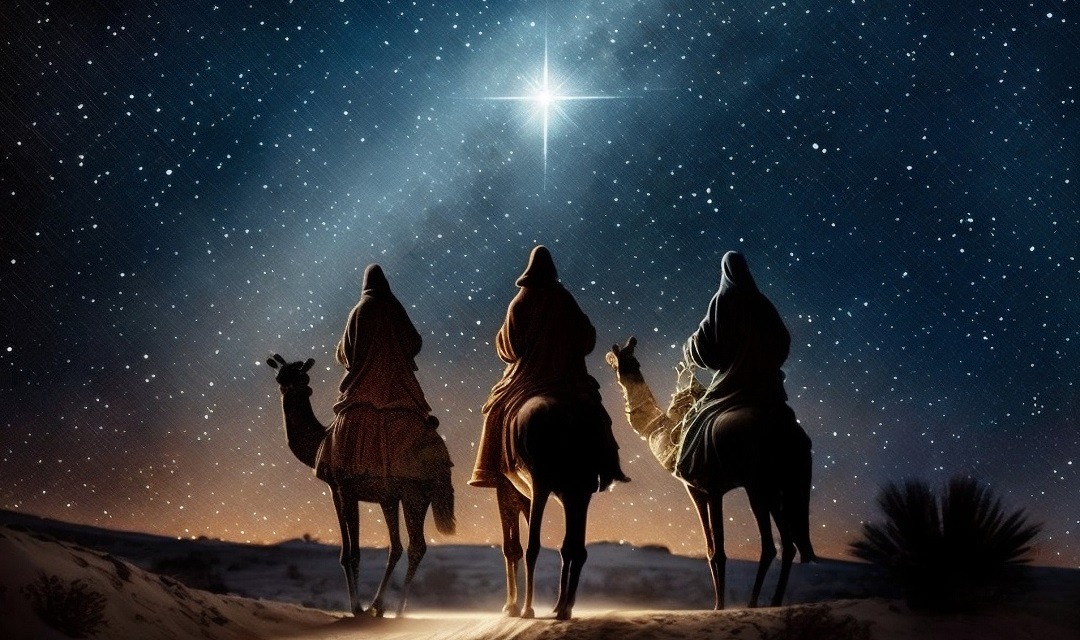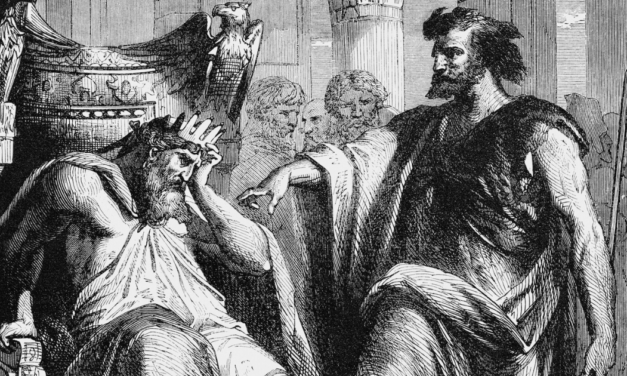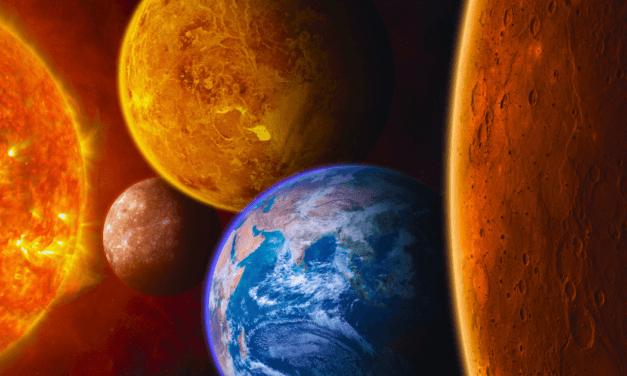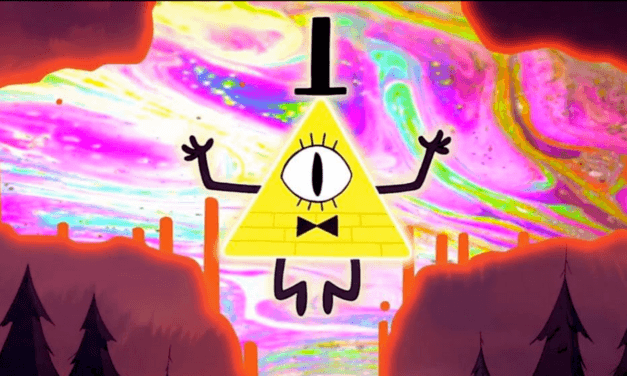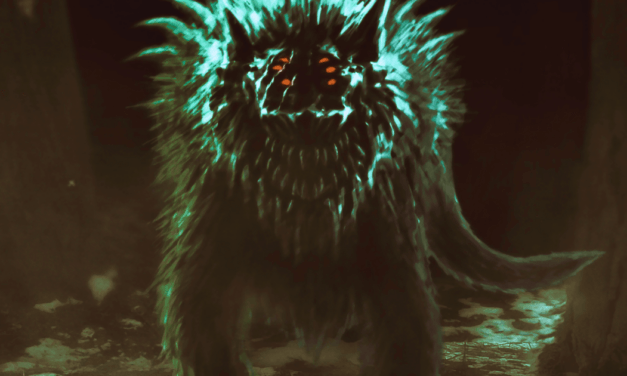This article first appeared in the Practical Hermeneutics column of the Christian Research Journal, volume 31, number 06 (2008). For further information about the Christian Research Journal, click here.
Proponents of astrology have long appealed to Matthew 2:1–12 in support of their claims that the Bible supports astrological practice. The passage, which tells of the quest of the Magi to find the infant Jesus, has thus been interpreted to mean that the Magi were Persian astrologers who used their occult means to ascertain the “Star of Bethlehem” in order to determine Jesus’ birthplace.
Is this reading, however, perhaps guilty of forcing Eastern presuppositions on a text that is strongly Judeo-Christian in ethos? Once again, a balanced, scholarly approach is necessary to reveal the objective meaning and intent of the passage in hand.
An Exclusivist Gospel. It needs first be noted that the biblical tradition is extremely exclusivist as regards theology and doctrine. Thus any source of supernatural revelation outside that of the God of Israel is forbidden (See, e.g., Deut. 18:9–15; Lev. 20:6). Likewise, astrology is condemned in Isaiah 47:13–14, Deuteronomy 18:9–12, and Jeremiah 10:2.
Further, the Gospel of Matthew is by nature an extremely Jewish book, and goes out of its way to appeal to Jewish readers, thus, for example, Matthew’s high veneration of the Law and his appeal to Messianic prophecies.1 Matthew is therefore unlikely to risk alienating his Jewish readership by endorsing a practice clearly condemned in Jewish holy writ.
Jew and Gentile in Matthew. To properly appreciate the significance of the Magi incident, it is first necessary to recognize Matthew’s important theme of the shifting of divine favor from Israel, as the nexus of God’s dealings, to the Gentiles. According to scholars, as Israel as a nation rejects its Messiah, so God’s grace moves to the Gentiles, who prove more receptive.2
Consequently, this theme of judgment on Israel and grace for the Gentiles permeates the book. Thus in Matthew 1:5, Gentiles are included in the Messiah’s genealogy; while in Matthew 21:43 the kingdom will be “taken away” from Israel and “given to a people who will produce its fruit.”3 In Matthew 8:1–13 two incidents are contrasted: the Jewish leper has limited faith (v. 1–4), while the Gentile centurion has great faith (v. 5–13). In summary, the “subjects of the kingdom” are rejected from the kingdom, but Gentiles are embraced (v. 9–12; See also Matt. 22:9–10; 15:21–28; 28:19–20).
So in Matthew 2:1–12, Herod, King of Israel, seeks to kill his nation’s Messiah, while Gentiles traverse the earth to worship Him. Once again, Gentiles show extraordinary faith, while Israel exhibits little.4
The Balaam Connection. Moreover, Matthew’s theological intentions become clear when we compare the Magi episode with the story of Balaam in Numbers 22–24, where scholars have long noted a number of striking parallels.5
For example, just as Balak, King of Moab, tried to hinder Israel’s flight and inheriting of the Promised Land under Moses (Num. 22:1–6), so Herod desired to kill the Messiah-deliverer who would bring redemption to Israel (Matt. 2:3–12). Furthermore, as the pagan seer Balaam was Balak’s intended instrument of destruction for Israel (Num. 22:7–21), so are the Magi, albeit unwittingly, instruments of Herod’s wrath against Jesus (Matt. 2:7–12).
So, too, first-century Jewish theologian Philo refers to Balaam as a magos, who, like Matthew’s Magi, came “from the East.”6 Notably, Balaam had two servants (Num. 22:22), which would bring the number of the party to three, which tallies with the traditional “three wise men” of Christian lore.7
In both cases, therefore, evil kings employed pagan Magi as a means of destruction for their enemies, but in both cases, through prophetic intervention, the attempts were defeated, and the Magi became a blessing, not a curse, for God’s people.
Perhaps more notably, Balaam, under the influence of the Holy Spirit, prophesies the “star” that would rise (Num. 24:17), symbolizing the Messiah. Matthew’s Magi also see the star that leads them to the Messiah.8
Moreover, both Balaam and the Magi go from being practitioners of pagan arts to recipients of God’s revelation, revelation that their occult means could not have granted. Clearly Matthew is making a statement about revelation given to Gentiles, which results in blessing for themselves and God’s people.
Jesus, Savior of the World. It is here that the real import of the Magi episode becomes clear, for it marks the start of the glorious theme of the extending of God’s grace from Israel to the world.
In Matthew 8:9–12, Gentiles come from East and West—surely linked to the Magi of chapter 2, who are Gentiles from the East. In Matthew 28:19 the disciples are to draw converts from “all nations”—again East and West.
Commentators have also drawn parallels between the Magi incident and the Old Testament prophecies of Gentile lands acknowledging God as King over the whole earth.9 Isaiah 2:2–4 tells of “the mountain of the Lord’s temple” established “as chief among the mountains,” where “all nations will stream to it.”
The nations’ pilgrimage is mentioned elsewhere: according to Isaiah 60:1–6, “Nations will come to your light, and kings to the brightness of your dawn…bearing gold and incense” (See also Ps. 72:10–15). The three gifts of the Magi were, of course, gold, incense, and myrrh (Matt. 2:11).
According to Matthew 24:30 Jesus will come on the clouds in glory, and “all the nations of the earth will mourn.” In Matthew 25:31–46, Jesus judges “all nations,” dividing them as sheep and goats. The message is clear: Jesus is Messiah of Jew and Gentile, and King of the whole world, which will one day pay homage to Him. For Matthew, then, the Magi episode has clear Messianic and eschatological undertones, for the pagan sojourners are among the first to partake of such Gentile “pilgrimage.”10
What Do We Make of the Revelation to the Magi? The question still remains as to where the Magi obtained their revelation pertaining to the Bethlehem Star.
Here several points need be made: First, it has been pointed out that “since the magi in Matthew’s narrative have some knowledge of Jewish messianic expectation, they must have had some contact with Jewish thinking,” the most likely contact being a Jewish community in the Diaspora, possibly in Babylon.11
Second, ancient Roman writers Tacitus and Suetonius make it clear that there was a common belief in the ancient world that a ruler was to emerge from Judea at this time.12
Furthermore, in the Bible, stars are said to represent great people (Dan. 12:3), angels (Job 38:7), and more notably, Jesus Himself (Rev. 22:16). There exists in Scripture, therefore, the notion of personages having some stellar representation—without going to astrological extremes. What can be inferred from the above is that there is no need to resort to astrology to explain the Magi’s knowledge of the Star. There is plenty of evidence to suggest that they derived their information from Jewish sources.
Notably, Jesus’ Second Coming (as with His first) is heralded by a heavenly “sign,” where “all the nations of the earth” will see it and mourn (Matt. 24:30). Matthew thus ends as it begins. It is interesting to note that the fact that “all the earth” sees it indicates that it is not through hidden arts that the star is perceived.
The fact is, Matthew’s account does not tell us specifically what the Magi were. In fact, some have proposed that they were not astrologers at all. Furthermore, neither are we told what the “Star of Bethlehem” was. Many suggestions have been proposed, ranging from astronomical phenomena to supernatural signs.13 Given the paucity of data on these questions, it is difficult to draw dogmatic astrological conclusions on the matter.
Much is made of the Magi’s spiritual foresight. What is seldom emphasized, however, is how limited their perception actually was. Far from being certain of the whereabouts of Jesus’ birth, they only had a vague idea. The revelation granted to them, whether through ancient Jewish contact with their civilization or a unique revelation of God, was only sufficient to get them to Jerusalem. It was through special revelation (Micah 5:2) that they ascertained that Jesus was to be born in Bethlehem (Matt. 2:4–6).
Notably, Matthew’s ongoing theme of the gospel of salvation spreading to the ends of the earth presupposes that Christian revelation is superior, granting salvation where other religious traditions cannot. Underscoring this, it is through God’s grace that the Magi were warned in a dream not to go back to Herod. Any possible astrological skills were evidently insufficient to warn them of the danger that lay ahead.
Implications For Us. So then, the Magi incident must be interpreted in the light of a Judeo-Christian theology of the sovereignty of God over all powers and peoples. The point of Matthew 2:1–12 is to glorify God, not pagan traditions.
The clear-cut implication of the text is the common Matthean theme that Jesus, King and Judge of the world, is coming, and that Jew and Gentile alike must accept His way of salvation, forsaking all others.
Here we may find a metaphor for the present day: In Matthew 2 pagan peoples bow the knee to the Jewish Messiah and accept His ways over and above their own, despite significant alterations to their worldview. What, then, should be the response of astrologers today on meeting the same Messiah and learning of His demands for their lives?
—Gregory Rogers
NOTES
- William Hendriksen, The Gospel of Matthew (Edinburgh: Banner of Truth Trust, 1989), 97–98.
- Donald A. Hagner, “Introduction,” in Matthew 1–13, vol. 33A of Word Biblical Commentary, ed. Bruce M. Metzger, David A. Hubbard, and Glenn W. Barker (Dallas: Word Books, 1993), CD-ROM, under “The Sitz Im Leben (‘Life Setting’) of Matthew’s Community.”
- All Bible quotations are from the New International Version.
- Hagner, “The Magi Worship the Newborn King (2:1–12),” Explanation., in Metzger et al.
- Raymond E. Brown, Birth of the Messiah (London: Geoffrey Chapman, 1977), 193–95.
- Philo, Vita Moysis I L #276; cited in Brown, 193.
- Brown, 193.
- Ibid., 193–95.
- Hagner, “The Magi Worship the Newborn King (2:1–12),” Comment., in Metzger et al.
- Ibid.
- Ibid.
- Ben Witherington III, Dictionary of Jesus and the Gospels, ed. Joel B. Green, Scott McKnight, and I. Howard Marshall (Downers Grove, IL: InterVarsity Press, 1992), s.v. “Birth of Jesus,” 73.
- Hendriksen, 152–53.
